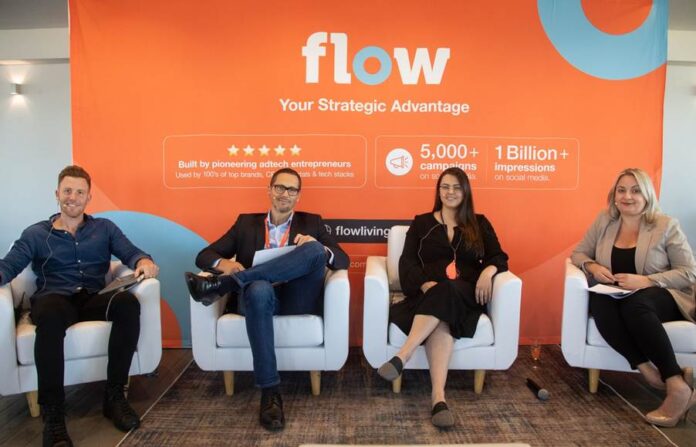Google’s intention to phase-out 3rd-party cookies on Chrome before the end of 2024 marks a significant shift for businesses aiming to reach their target audiences online. Prompting swift adaptation to a changing digital landscape, it has catapulted 1st-party data into the spotlight.
To unpack the pivotal role of 1st-party data in the post-cookie era, data-driven adtech company Flow hosted a panel discussion on 12 April 2024 titled “Turning Crumbs into Conversations: Leveraging 1st-party data in a cookieless world”.
The event brought together industry experts from data collaboration company Omnisient and media agency Meta Media, who discussed the opportunities and challenges posed by 1st-party data, providing key insights on this transformative shift in the digital landscape.
Understanding the power of 1st-party data
At the heart of the discussion was the concept of 1st-party data, described by Omnisient co-founder Anton Grutzmacher as data that is owned and generated by an entity.
“1st-party data, which is collected directly from customers and audiences via a company’s own channels, is rich in depth and relevance and holds the key to unlocking hyper-targeted marketing opportunities for businesses.”
Meta Media’s Leila Byrne stressed the urgency for companies to future-proof themselves by embracing 1st-party data but acknowledged the need for comprehensive business adjustments to do so.
Her colleague Andrea Leeuwner added that many companies are on the back foot when it comes to gathering their own 1st-party data, due to a historic reliance on 3rd-party data – where data is scraped, aggregated, and pulled together from browser cookies.
“While some of our larger clients have a wealth of 1st-party data, there are other smaller companies who are yet to start their data preparation journey. Our very first job at an agency level is to help them understand what technology needs to be in place before they get to the advertising stage.”
Byrne added that even for larger companies holding a wealth of 1st-party data, significant time is needed to be able to execute on it, due to privacy and compliance regulations that must first be met.
And for both smaller and large players, the ability to test, learn from and fully understand the different data sets they are tapping into is equally important, so they can identify how to leverage more precise targeting methodology.
A new growth opportunity through data collaboration
According to Flow co-founder Gil Sperling, the major opportunity in the shift from 3rd-party to 1st-party data lies in data collaboration.
“Not everyone can access their own 1st-party data, but through collaboration, where one brand uses consented 1st-party data from another brand in a data secure way, companies can optimise their marketing efforts and connect to their ideal audience with precision and purpose to deliver more personalised, impactful advertising.”
Grutzmacher agreed, saying: “You need to reach your audiences in the right way and data collaboration and data science makes this possible. We’re bringing the actuaries into the media world.”
For example, Flow’s collaboration with South Africa’s leading ‘cashback club’ SnapnSave gives brands an opportunity to target a hyper-targeted audience of high-intent South African shoppers that is processed in accordance with the Protection of Personal Information Act (POPIA). This type of collaboration gives them access to their ideal audience, which leads to improved user experience and higher Return on Investment (ROI) on marketing efforts.
Sperling said: “Data shows that conversion rates increase by 50% when using 1st-party data – therein lies enormous opportunity to increase Return on Investment.”
Grutzmacher added: “The concept of data collaboration does raise concerns of data security and privacy, because if you’re joining forces to get access to 1st-party data, it needs to be secure. What’s critical with data collaboration is to ensure there is a separation between the personal data and the data that improves people’s lives. By removing the personal information and anonymising the data, the risks disappear.”
Partnering with tech and data solution providers like Flow and Omnisient mitigates these risks for business allowing them to connect with hyper-targeted audiences without doing any of the heavy lifting.
The role of agencies in the new paradigm
As businesses grapple with the complexities of data management, the role of agencies will become increasingly vital.
Leeuwner emphasised the need for agencies to invest in data management and attribution models, stating: “Agencies are not just creating beautiful ads, there is now a lot more science behind it. This means agencies must gear themselves for that and ensure they have smart people who can make smart decisions around using data.”
In conclusion, the panel discussion underscored the transformative potential of 1st-party data in the cookieless era. “By understanding the technology required, embracing data collaboration and ensuring regulatory compliance, companies can leverage 1st-party data to drive better business results and stay ahead in a rapidly evolving digital landscape,” said Sperling.
“The paradigm shift in thinking is happening and represents a massive opportunity for growth – and our job is to show companies how they can thrive.”
To view Flow’s playbook on Turning Crumbs Into Conversions: Leveraging 1st-party data in a cookieless world, visit https://flowliving.com/wp-content/uploads/2024/04/Flow-1st-Party-Data-Playbook.pdf

